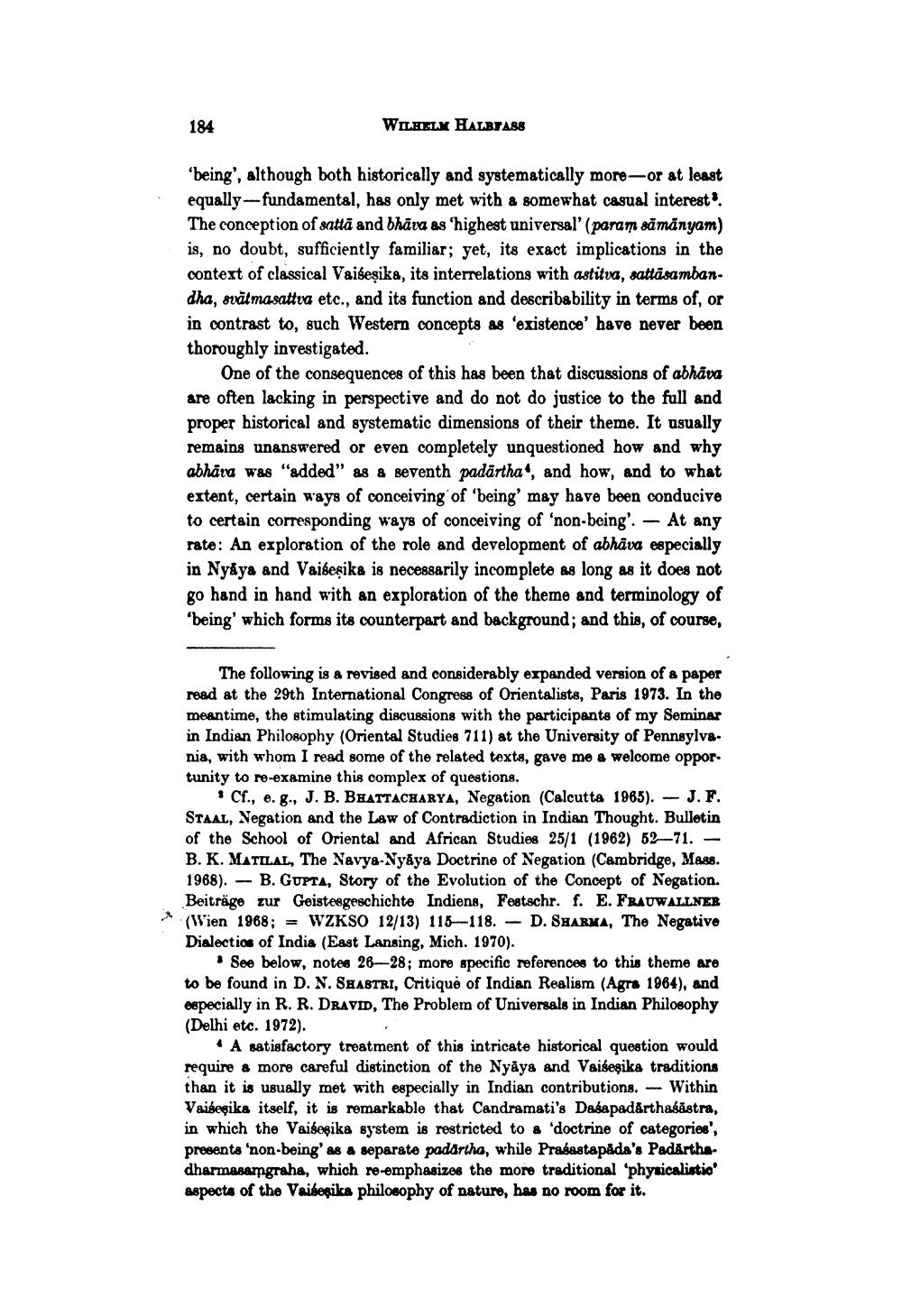________________
184
WILHELM HALBTASS
'being', although both historically and systematically more-or at least equally-fundamental, has only met with a somewhat casual interest'. The conception of sattā and bhāva as highest universal' (param sāmānyam) is, no doubt, sufficiently familiar; yet, its exact implications in the context of classical Vaiseṣika, its interrelations with astitva, sattasambandha, svātmasattva etc., and its function and describability in terms of, or in contrast to, such Western concepts as 'existence' have never been thoroughly investigated.
One of the consequences of this has been that discussions of abhava are often lacking in perspective and do not do justice to the full and proper historical and systematic dimensions of their theme. It usually remains unanswered or even completely unquestioned how and why abhāva was "added" as a seventh padartha, and how, and to what extent, certain ways of conceiving of 'being' may have been conducive to certain corresponding ways of conceiving of 'non-being'. - At any rate: An exploration of the role and development of abhava especially in Nyaya and Vaiseṣika is necessarily incomplete as long as it does not go hand in hand with an exploration of the theme and terminology of 'being' which forms its counterpart and background; and this, of course,
The following is a revised and considerably expanded version of a paper read at the 29th International Congress of Orientalists, Paris 1973. In the meantime, the stimulating discussions with the participants of my Seminar in Indian Philosophy (Oriental Studies 711) at the University of Pennsylva nia, with whom I read some of the related texts, gave me a welcome oppor. tunity to re-examine this complex of questions.
Cf., e. g., J. B. BHATTACHARYA, Negation (Calcutta 1965). J. F. STAAL, Negation and the Law of Contradiction in Indian Thought. Bulletin of the School of Oriental and African Studies 25/1 (1962) 52-71. - B. K. MATILAL, The Navya-Nyaya Doctrine of Negation (Cambridge, Mass. 1968). B. GUPTA, Story of the Evolution of the Concept of Negation. Beiträge zur Geistesgeschichte Indiens, Festschr. f. E. FRAUWALLNER (Wien 1968; WZKSO 12/13) 115-118. D. SHARMA, The Negative Dialectios of India (East Lansing, Mich. 1970).
See below, notes 26-28; more specific references to this theme are to be found in D. N. SHASTRI, Critique of Indian Realism (Agra 1964), and especially in R. R. DRAVID, The Problem of Universals in Indian Philosophy (Delhi etc. 1972).
A satisfactory treatment of this intricate historical question would require a more careful distinction of the Nyaya and Vaisesika traditions than it is usually met with especially in Indian contributions. Within Vaisesika itself, it is remarkable that Candramati's Dasapadarthaśāstra, in which the Vaisesika system is restricted to a 'doctrine of categories', presents 'non-being' as a separate padartha, while Prasastapada's Padarthadharmasamgraha, which re-emphasizes the more traditional 'physicalistic' aspects of the Vaisesika philosophy of nature, has no room for it.




